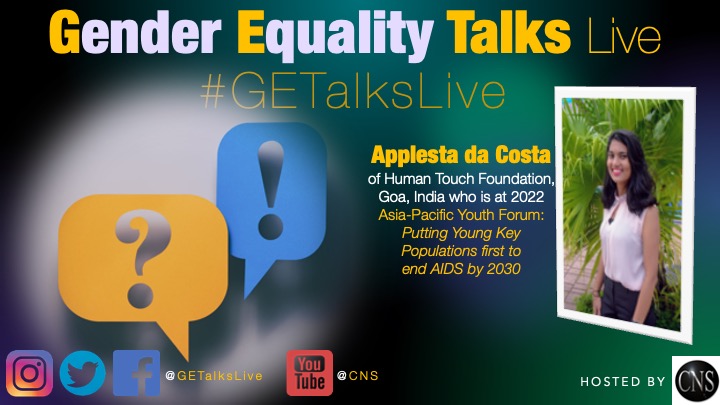Are HIV programmes missing the young who need them the most?
BOBBY RAMAKANT - CNS

Putting young key populations first to end AIDS by 2030: Clock is ticking and progress is not at par
(Image by CNS) Details DMCA
More than one in every four new HIV infections in Asia Pacific were in the young people in the Asia Pacific region (in 2020). More worrying is that almost all of these new HIV infections in the young people, were among the young key populations. Writing on the wall is clear: unless we scale up HIV programmes and increase programme effectiveness for the young key populations, we will fail to end AIDS by 2030.
Over 26% of new HIV infections in Asia and the Pacific region were in the young people aged 15-24 years (in 2020), with young men almost twice as likely as young women to acquire HIV, said Applesta da Costa, a young psychologist from India who took part in the "Asia Pacific Youth Forum: Putting young key populations first to end AIDS by 2030" in Thailand. In some countries, over 45% of new HIV infections were among young people, said Applesta who is a part of Human Touch Foundation team in Goa, India. Asia Pacific Youth Forum was co-hosted by Thailand's Ministry of Public Health, United Nations joint programme on HIV/AIDS (UNAIDS Asia Pacific), and other partners.
Alarmingly, 99% of new HIV infections in young people (aged 15-24 years) are happening among those from key populations and their sex partners. In Asia Pacific region, 97% of all new HIV infections among young people in 2020 occurred in 10 countries.
It is important to note that number of new HIV infections among key populations (young and older people among the key populations) has been very high compared to general population. "HIV prevalence in key populations in India is 6 to 13 times higher than the prevalence in general population in India (0.22%). HIV prevalence among persons who inject drugs is 6.26%, 3.14% among transgender community (including Hijra), 2.69% among gay men and other men who have sex with men, 2.10% among prison inmates, and 1.56% among female sex workers. If we are to progress towards ending AIDS, we have to strengthen HIV prevention, treatment, care and support services for the key populations on priority," said Dr Ishwar Gilada, who represents Asia Pacific region at the Governing Council of International AIDS Society (IAS), and is the President of AIDS Society of India (ASI).
HIV prevention must not slip off the radar
Almost half of new HIV infections in young people in the Asia Pacific region in 2020 were among gay men and other men who have sex with men. But less than 25% of young gay men and other men who have sex with men and young people who inject drugs, received prevention services to protect themselves and other people from HIV.
(Note: You can view every article as one long page if you sign up as an Advocate Member, or higher).





